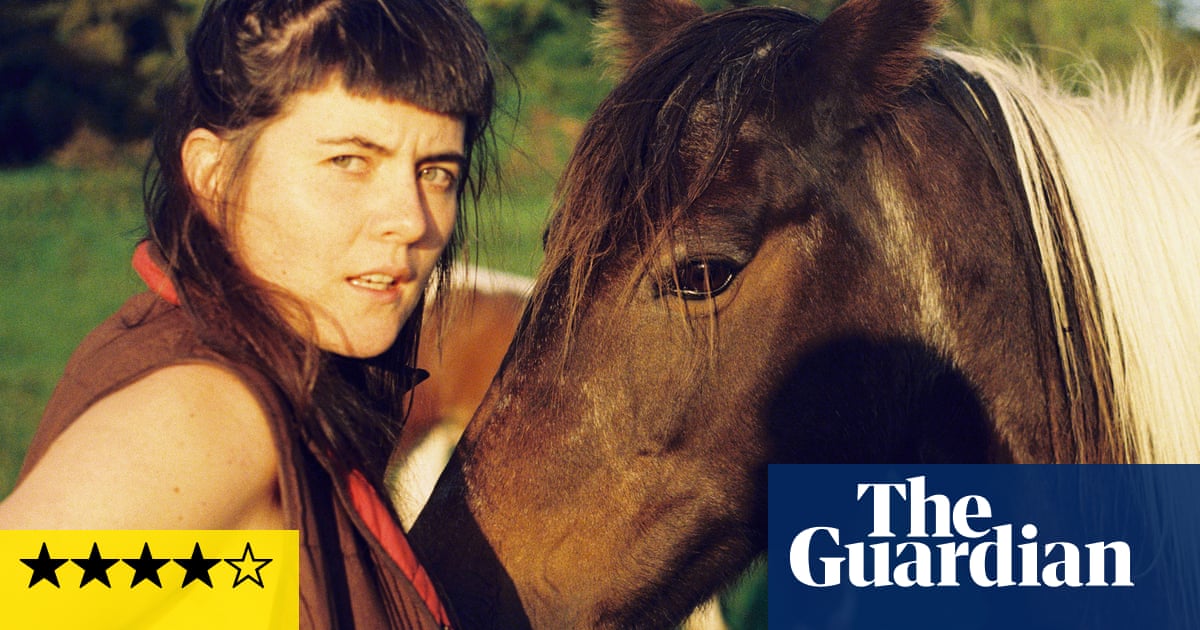Travellers’ songs sung in Scots are the focus of Josie Vallely, a gutsy, Glasgow-based artist performing asQuinie(pronounced “q-why-nee”; “young woman” in the Doric dialect), whose third album acknowledges ancestors watching over her. It includes traditional singers Lizzie Higgins, Jeannie Robertson and Sheila Stewart, whose rawness drones, speaks and soars over these 11 varied tracks, mixing tunes from fiddles, Gaelic sean-nós singing, and canntaireachd (the vocal mimicry of pipe music).
Quinie collected these songs from people using a method that fits the album’s strange, rustic mood: she rode her horse, Maisie, across Argyll (“you pay attention to all your senses, have different conversations with people and connect to older ways of doing things,” she writes in the liner notes of this journey; she’s also made a 15-minute film). On Auld Horse, her spoken words ripple against field recordings of water, the fabulous double bass of Stevie Jones (Alasdair Roberts, Sounds of Yell) and Ailbhe Nic Oireachtaigh’s rumbling viola. Another spoken word track, Health, Wealth a Yer Days, is warmed by handclaps and Oliver Pitt’s bouzouki.
Elsewhere, Quinie’s unfiltered, ripe singing voice resonates like a siren. It twists around Harry Górski-Brown’s pipes in the opening, viscous track Col My Love (which warns of the dangers of standing close to the shoreline). It confronts, but never overpowers, the floating, still tones of the duduk (an Armenian oboe) in Sae Slight a Thing. Quinie’s cappellas are especially powerful: her take on Matt Armour’s 1982 ballad, Generations of Change, is no-nonsense and moving, in which a grandmother recounts her father’s life, the “lang holidays” with her grandchildren, and how “the weakness of age makes room for the young”. Alive with ideas, this record holds the past like a cauldron, broiling bewitchingly.
Varoare Dublin-based musicians Lucie Azconaga and Consuelo Nerea Breschi, partners in life and music, who unite with many contemporary Irish lodestars on their terrific second album,The World That I Knew(self-released). Highlights include Skibbereen, a duet with Junior Brother, and a majestic Green Grows the Laurel with John Francis Flynn.The Gentle Goodsays goodbye to the dimly lit, acoustic treatments of 2023’s gorgeous Galargan for washes of vintage synths, distorted guitars and layered vocals onElan(Bubblewrap). A warm, psychedelic portrait of a flooded valley in Powys, mid-Wales, its influences include 19th-century ballads, RS Thomas’ poetry and, on the sunstruck To Be in Summer, west coast pop. Another joy isLast Call, the final album by folk-influenced singer and songwriterSteve Tilston, his voice as warm and spry as ever, his fingerpicking filling the title track with electricity.
